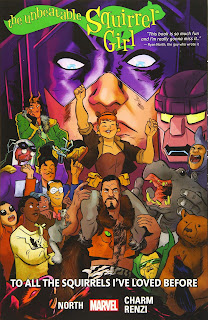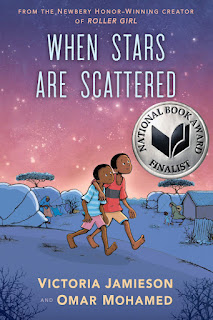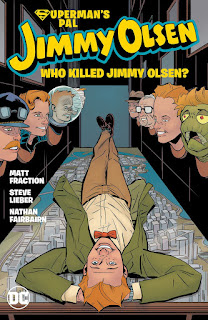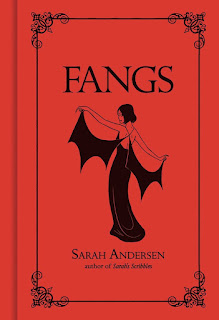Black Hammer: Age of Doom, Part II by Jeff Lemire, Dean Ormston, and Rich Tommaso
OK, you know how in big superhero comics, everything needs to be back at status quo ante eventually? Worlds will live, worlds will die, Ultrafellow will be replaced by a disabled teen Latina, and the entire Evil-Fighting Gang will disband for good…but only until it all goes back to the way it was before.
Readers tend to assume that your modern passel of writers – the ones we respect, the ones who talk about loving punching-comics since they were five, the ones we sometimes think still wear Underoos to big shows – only do this because they are forced to do so by the evil rapacious companies, and that, given their druthers, they would Change Things Permanently, which Would Be Awesome.
So, under this assumption, all of those careful putting-things-back-in-the-box storylines, all of the big Events that undo the previous Event to reset for the next Event – those aren’t the fault of their writers, those are all imposed on them by the evil, evil Suits in…what is it, Burbank, now? Burbank is funny, so let’s say Burbank.
People assume that. They want to believe it. But is it true? Or do those writers just want to put all of their toys back in the box neatly, because they’re still those five-year-olds playing with Star Wars dolls [1] at heart?
Why do I bring this up? Well, you can probably guess. But I’m spoiler-averse enough not to completely fucking spell it out for you right here.
So, he said, brightly, here’s Black Hammer: Age of Doom, Part II , a creator-owned superhero comic that has been lauded by all of the Usual Suspects for the Usual Reasons. The series won the Eisner for Best New Series in 2017. It’s written by Jeff Lemire, who also writes comics about real grownups who don’t punch each other all the time, and drawn mostly by Dean Ormston, with a few issues in this book from the pen of Rich Tommaso. This particular collection gathers the end of the second main series , and – nudge nudge, wink wink – finishes up the main story begun in the first volume . (Here’s what I’ve written about Black Hammer-verse comics so far : I warn you that I have perhaps enjoyed complaining about them more than I did reading them.)
Now, I like Lemire’s non-superhero writing. I think he’s one of the great talents in comics, with a deep understanding of human behavior and a willingness to tell serious, dark stories when that’s the material he’s working with. And flashes of that Lemire do shine through the cardboard walls of the superhero universe he’s constructed here for his dolls to play in. Ormston is a solid artist in that spooky Dark Horse house style, and Tommaso has a quirkier thin-line style (here something like a ’40s comic translated through a modern sensibility) that I quite like as well.
So these guys do good work. They can tell great stories. They just, from the evidence here, would prefer to move their dolls around a few very cliched sets and ape dialogue they loved as children.
This book opens on the cliffhanger from Age of Doom Part I: our heroes are about to go back to the real universe for the first time in a decade, which will allow Darkseid the Anti-God to make the skies red for twelve issues or so and then, presumably, to destroy everything everywhere. (We don’t see him actually do anything like that: maybe the Anti-God just wants to go down to the shops and get a few things? He’s never actually on stage , or doing anything. All we know is what his enemies say about him.) So, to save the world, Lemire deploys first one, then another Standard Modern Comics Plots.
First up, one of the character has to meet his maker, in best Grant Morrison fashion, with the usual panoply of forgotten/never-existed characters for added pathos. Then we get the Everything Is Changed World, where All of The Heroes Have Forgotten They Ever Were Heroes, because That Is the Saddest Possible Thing. Both of those plots get solved, obviously: that’s how Standard Plots go in superhero comics.
And then…well, see my first few paragraphs. I’m not going to tell you exactly what happens, but if you read superhero comics, you know the drill by now.
This is deeply disappointing, and makes all of the Black Hammer comics up to this point completely pointless.
Now I’ve seen modern creators do “my favorite childhood comics , but with actual human motivations,” and that’s plausible. I’ve seen “how I would have handled my favorite story,” which is hermetic but understandable. I’ve seen a lot of “this is the right way for Character X to behave, unlike what all those dum-dums said,” which can be fun.
But this is something else. It’s a like a long car trip through boring, familiar territory with a promise of something new at the end, only to turn a corner and suddenly be back home, only the house is shabbier by our absence. If this is what Lemire planned to do the whole time, I have a hard time understanding why he, or anyone, though it was a worthwhile thing to do.
[1] “Action figure” is a term made up so that American boys could play with dolls and not feel feminine in a way that their culture embarrassed them about. All action figures are dolls. Period.
Reposted from The Antick Musings of G.B.H. Hornswoggler, Gent.


































































